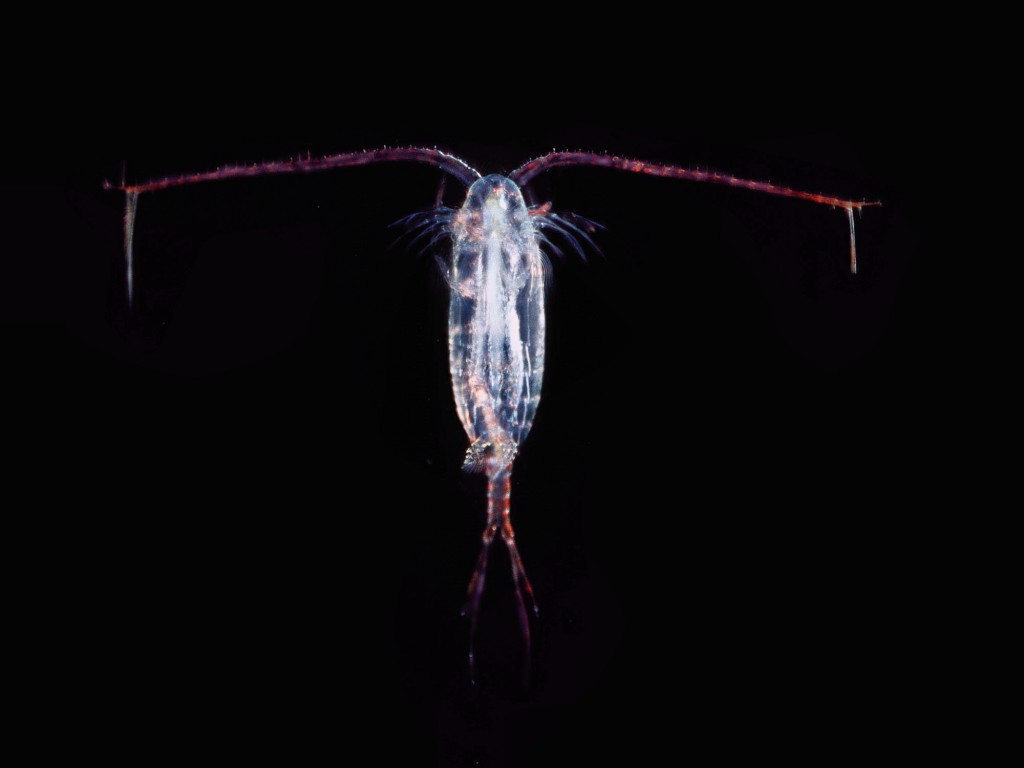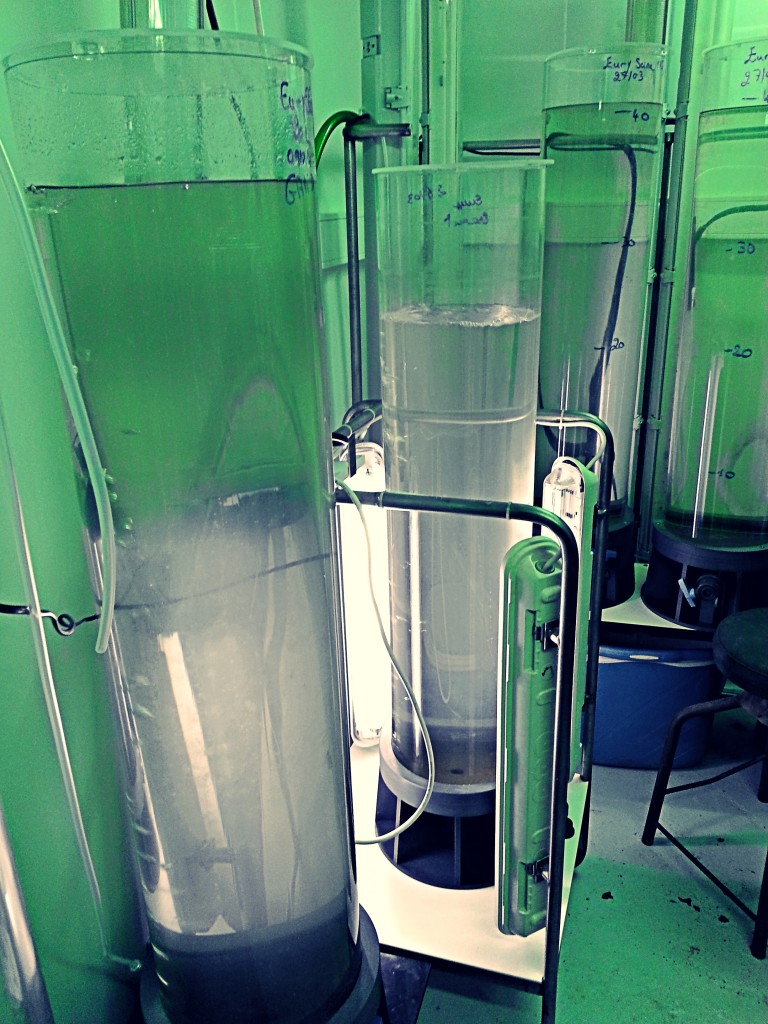Dynamics of copepods in turbulent flows

The most common family of multi-celled organisms in the zooplankton is a rather diversified group of crustaceans known with the name of Copepods . Among them the most numerous ones have a characteristic elongated body shape and measure about one 1 mm in size, a picture can be seen in figure 1 . Copepods have a major role in the marine ecosystem because they are the secondary producers in the ecological food-chain linking phytoplankton cells (the primary producers) to fish larvae and even to large mammals such as whales. Copepods are carried by marine currents in the same way suspension of nearly-neutrally buoyant particles are transported by the flow. However, differently from material particles, copepods have the capability to swim and so to add small-scale deviations to the – so called – passive trajectory. In this sense phytoplancton can be thought as a suspension of small passive particles, while zooplankton and in particular copepods may be viewed as kind of (slightly larger and non spherical) active particles.
Copepods swimming behavior exhibits quick jumps, with uncorrelated frequency, but apparently correlated to the surrounding hydrodynamical conditions. Among the possible hypothesis for this behavior there is the need to avoid strong fluid accelerations or high velocity gradients, similarly to what for example makes a fly avoiding to approach too closely a rotating fan. Of course, there are also non-hydrodynamics factors concurring the the overall copepod mobility, such as the need of finding regions of more abundant food or to reach individuals of the other sex.
In conclusion, the overall spatial distribution of copepods in a given sea region is the result of the interplay between the highly-chaotic hydrodynamics processes linked to turbulent flows and the swimming strategies of each copepod individual. This may lead to non-trivial phenomena. As an example: it has been observed that colonies of copepods are able to maintain large population densities in regions where the turbulence intensity is quite high, such as in river estuaries and in coastal water. It is not presently understood which combined biological/physical mechanism makes this possible. The object of this thesis is to model the dynamics of copepods in turbulent flows by including both the hydrodynamical forces (drag, added mass, buoyancy) and the modeling of the impulsive forces able to properly account for their swimming behavior. In particular the latter force will be chosen in agreement with the experimental observation on copepods, which are already available in the the literature. The force will be introduced in the Lagrangian equation of motion for particles in a well validated Direct Numerical Simulation (DNS) code. This DNS will be able to tracks up to millions of particle/copepods trajectories in a turbulent flow that has similar conditions as the ones found in the ocean.

The analysis of results will follow a statistical approach. In a first step we will characterise the difference in the copepods dispersion as compared to the passive particle case. In a further step we will try to compare the results with experimental measurements. Some of the experiments are already available in the literature, others are in progress at the Laboratoire Oceanologie et de Geosciences (UMR 8187).
February 14, 2017
Our preprint
Copepods encounter rates from a model of escape jump behaviour in turbulence
October 12, 2016
Another happy end 🙂 🙂 Hamidreza Ardeshiri defends his PhD thesis titled “Dynamics of Copepods in Turbulent Flows” on october 12th 2016 @ University of Lille. His manuscript is here [Hamid-PhD].
September 15, 2016
Hamidreza Ardeshiri gives a talk at Europen Fluid Mechanics Conference, Sevilla ( http://www.efmc11.org ) [abstract]
Hamidreza Ardeshiri talks at Flowing Matter 2016 Conference in Porto on 11 January 2016
[slides]
January 7, 2016
Our preprint
A Lagrangian model of Copepod dynamics: clustering by escape jumps in turbulence
Hamidreza Ardeshiri talks at Journée des Doctorants on 25 June 2015[slides]


